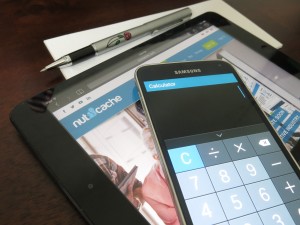Invoicing
 Invoicing is something every business owner has to do – if they want to get paid!
Invoicing is something every business owner has to do – if they want to get paid!
f
So, what’s the best way to go about this?
d
Well, the bad news is that there’s no one way that suits everyone – but the good news is that there are numerous options available to you:
s
f
Simple Invoice
Most small business owners tend to start off creating simple invoices using Microsoft. After all, when you’re just starting out as a freelancer, or you’ve just made the leap into full-time self-employment, you’ll be juggling a lot of things, and it’s unlikely that you’ll have every duck in a row when you need to send out your first invoice. So, creating a simple invoice using Microsoft is a quick and easy way to get the job done, without the need to make any decisions on what invoicing service you think you want to use long-term. Just be sure to include:
Your Details:
Name or business name (the name that needs to be on the check they send you!)
Business address
Telephone number
Email address
Website URL
The Client’s Details
Name of contact person
Business address
Telephone number
Email address
f
Invoice Details
Project details
Invoice amount
Issue date
Invoice number (use a numbering system makes sense to you)
Payment due date (you decide on this)
If you need some ideas for simple templates, you’ll find some free Microsoft templates here and here, among other places. Or even a variety of other free templates, such as this one.
d
Invoice Systems
There are also numerous invoicing systems (software programs or online applications) that offer different bells and whistles – for example, some may allow you to track your time on projects, set up automatically recurring invoices, and send reminder emails when an invoice payment is overdue.
Some offer a basic free option in addition to their paid version. There’s no single best option out there – it’s a matter of what works best for you and your business.
If you’re just starting to think about using an invoicing system, you might want to check out a bunch of options to see if any seem like a best fit for you. Your might find this review article helpful – it discusses numerous options.
After unofficially polling friends and colleagues recently, some of the names that seem to pop up most frequently include:
d
QuickBooks (this may be especially useful if you already use it for your accounting)
FreshBooks
Nutcache
Harvest
f
I’ve been using Nutcache for a couple of years – I just use the free version and it suits me fine.
If you’re overwhelmed by all the options and don’t know which to choose, I’d advise just starting with a free system – or at least a free trial of one of the paid systems (just don’t forget to cancel if you don’t like it). You won’t know if a system suits your needs until you give it a bit of a test drive.
d
Client Template
Alternatively, some clients might even ask you to use their own template – it may be the only form of invoice they accept. For example, I work with a quasi-Government organization that asks me to use their particular PDF template for invoicing. And I work with a CME company that requires me to submit “invoices” via their electronic system.
These are easy options because they’re both up-and-running – all I have to do is complete them. However, if you’re in a similar boat and are already using an invoicing system for everything else, just don’t forget to track the payment somewhere for accounting purposes. I keep an Excel spreadsheet that details all of my work projects for the year – so even if a project hasn’t been invoiced via my usual Nutcache system, I’ve logged it on the spreadsheet, so it’s tracked along with everything else for accounting purposes.
This is my Go To document for all my projects – it lists them all, along with information such as the contact person, project due date, date when I submitted the first draft, the date I submitted an invoice, the date I received payment, etc., etc.
h
Hopefully this will help get you started if you’re trying to figure out how to set up your invoicing system!
d